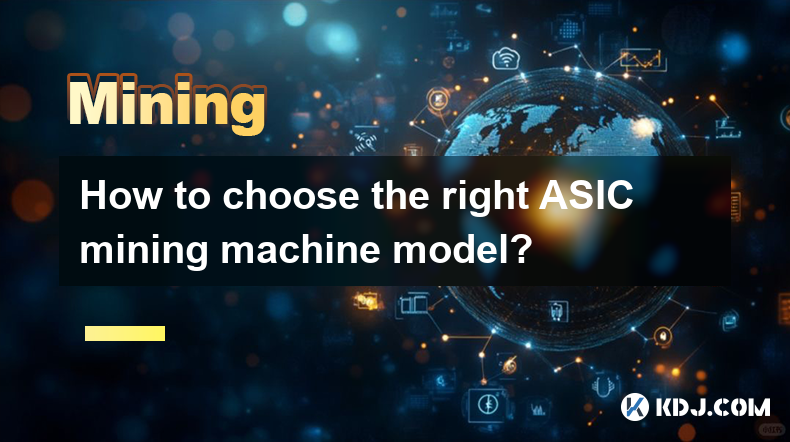-
 Bitcoin
Bitcoin $87,160.3686
2.59% -
 Ethereum
Ethereum $1,577.5291
-0.58% -
 Tether USDt
Tether USDt $1.0000
0.00% -
 XRP
XRP $2.0804
0.22% -
 BNB
BNB $596.3334
0.99% -
 Solana
Solana $136.5658
-0.15% -
 USDC
USDC $1.0000
0.00% -
 Dogecoin
Dogecoin $0.1584
1.77% -
 TRON
TRON $0.2458
-0.32% -
 Cardano
Cardano $0.6208
0.05% -
 Chainlink
Chainlink $13.1006
-1.96% -
 UNUS SED LEO
UNUS SED LEO $9.1412
-1.97% -
 Avalanche
Avalanche $19.9880
2.50% -
 Stellar
Stellar $0.2528
3.56% -
 Shiba Inu
Shiba Inu $0.0...01238
-0.19% -
 Toncoin
Toncoin $2.8930
-3.79% -
 Sui
Sui $2.2031
4.44% -
 Hedera
Hedera $0.1692
1.25% -
 Bitcoin Cash
Bitcoin Cash $343.2002
2.28% -
 Polkadot
Polkadot $3.8296
-1.99% -
 Hyperliquid
Hyperliquid $17.9378
1.39% -
 Litecoin
Litecoin $78.0777
0.75% -
 Dai
Dai $0.9999
0.00% -
 Bitget Token
Bitget Token $4.4322
0.90% -
 Ethena USDe
Ethena USDe $0.9993
0.00% -
 Pi
Pi $0.6347
-0.88% -
 Monero
Monero $214.7110
-0.08% -
 Uniswap
Uniswap $5.2643
-0.22% -
 Pepe
Pepe $0.0...07787
2.99% -
 Aptos
Aptos $4.9970
-0.84%
How to choose a mining pool for cloud server mining?
Choosing a cloud mining pool requires considering factors like pool fees, payout systems (PPS, PPLNS), hashrate, reputation, security, and geographic location to maximize profitability and minimize risk.
Mar 21, 2025 at 04:28 pm

How to Choose a Mining Pool for Cloud Server Mining?
Cloud server mining offers a convenient way to participate in cryptocurrency mining without the hassle of managing your own hardware. However, choosing the right mining pool is crucial for maximizing your profitability and minimizing risks. This article will guide you through the key factors to consider when selecting a mining pool for your cloud server mining operation.
Understanding Mining Pools
Mining pools aggregate the computing power of many miners to increase the likelihood of solving a block and earning rewards. Instead of each miner competing individually, they contribute their hash rate to the pool. The rewards are then distributed among the participants based on their contributed hash power, typically proportionally. This reduces the volatility of individual mining efforts and provides a more consistent income stream.
Factors to Consider When Choosing a Mining Pool
Choosing the right mining pool involves careful consideration of several critical factors:
- Pool Fees: Mining pools charge fees for their services. These fees typically range from 0% to 3% of your earnings. Lower fees translate directly to higher profits. Compare fees across multiple pools before making a decision.
- Payout System: Understand how the pool distributes rewards. Some pools use a proportional system (PPS), paying you based on your contributed hash rate regardless of whether the pool finds a block. Others use a Pay Per Share (PPS+) or PPLNS system which can lead to more variability in payouts. Consider your risk tolerance.
- Pool Hashrate and Server Infrastructure: A larger pool hash rate generally increases the frequency of block solutions and your chances of earning rewards. However, a very large pool can also mean higher competition and potentially lower individual earnings. Investigate the pool's server infrastructure and ensure it's robust and reliable to prevent downtime.
- Pool Transparency and Reputation: Transparency is vital. A reputable pool will provide clear information about its fees, payout methods, and operational history. Look for pools with a proven track record and positive user reviews. Check for readily available information on their website and community forums.
- Payment Methods and Minimum Payout Threshold: Ensure the pool supports your preferred payment methods (e.g., Bitcoin, Ethereum). Also, check the minimum payout threshold to avoid accumulating small amounts that may take a long time to reach the payout level.
- Mining Algorithm Support: Confirm that the pool supports the mining algorithm for the cryptocurrency you intend to mine. Different cryptocurrencies use different algorithms, so choosing a pool compatible with your target coin is crucial.
- Geographic Location and Latency: Server location affects network latency. A pool server geographically closer to your cloud server will reduce latency, potentially improving your mining efficiency. Consider your cloud server location when choosing a mining pool.
- Pool Software and Interface: A user-friendly interface and easily accessible pool software can simplify your mining operations. Look for a pool with a clear and intuitive interface that provides real-time statistics and monitoring tools. Some pools offer dedicated mining software or API integrations for easier management.
- Security: Choose a mining pool with a strong reputation for security. This includes robust measures to protect against attacks and ensure the integrity of the payout system. Look for evidence of strong security practices, including encryption and regular security audits.
- Customer Support: Reliable customer support is crucial, especially when you encounter problems. Look for a pool that offers various support channels (e.g., email, forum, live chat) and responsive support staff.
Step-by-Step Guide to Choosing a Mining Pool:
- Identify your target cryptocurrency: Decide which cryptocurrency you want to mine.
- Research potential mining pools: Find several pools that support your chosen cryptocurrency.
- Compare pool fees and payout systems: Analyze the fees and payout methods of each pool.
- Check pool hashrate, infrastructure, and reputation: Evaluate the pool's size, reliability, and trustworthiness.
- Verify payment methods and minimum payout threshold: Ensure the pool's payment options and payout limits align with your needs.
- Assess the pool's software and interface: Determine if the pool's software and interface are user-friendly.
- Consider geographic location and latency: Choose a pool with servers located in a region that minimizes latency.
- Prioritize security and customer support: Ensure the pool prioritizes security and offers responsive customer support.
- Make your decision: Select the pool that best suits your needs and preferences.
- Configure your cloud server: Configure your cloud server to connect to your chosen mining pool.
Common Questions:
Q: What is the difference between PPS, PPLNS, and PPS+ payout systems?
A: PPS (Pay Per Share) pays you for every share submitted, regardless of whether the pool finds a block. PPLNS (Pay Per Last N Shares) pays you based on your shares submitted within a certain window, even if the pool doesn't find a block immediately. PPS+ is similar to PPS but with a slight adjustment to account for block difficulty changes.
Q: How do I choose between a large and a small mining pool?
A: Large pools offer more consistent payouts but may have higher competition and lower individual earnings. Small pools offer potentially higher individual earnings but come with greater payout volatility.
Q: What is the impact of latency on mining profitability?
A: Higher latency can lead to lost shares and reduced profitability, as it takes longer for your work to reach the pool. Choose a pool with low latency for optimal performance.
Q: How can I ensure the security of my mining operation when using a cloud server and a mining pool?
A: Use strong passwords, enable two-factor authentication, keep your software updated, and choose a reputable and secure cloud provider and mining pool. Regularly monitor your mining activity and payouts.
Q: What are the risks associated with cloud server mining?
A: Risks include the possibility of pool scams, cloud server outages, fluctuating cryptocurrency prices, and the potential for malware or hacking. Diligent research and selection of reputable providers can mitigate these risks.
Disclaimer:info@kdj.com
The information provided is not trading advice. kdj.com does not assume any responsibility for any investments made based on the information provided in this article. Cryptocurrencies are highly volatile and it is highly recommended that you invest with caution after thorough research!
If you believe that the content used on this website infringes your copyright, please contact us immediately (info@kdj.com) and we will delete it promptly.
- Lightchain AI: The Future of Cryptocurrency
- 2025-04-22 05:30:13
- Coinbase Expands XRP Futures Contracts Trading
- 2025-04-22 05:30:13
- Difficulty Spike and Hashrate Drop Lengthen Block Times
- 2025-04-22 05:25:13
- Despite the Harshest Profit Squeeze in Half a Decade, Bitcoin Mining on U.S. Soil is Consolidating and Gathering Momentum
- 2025-04-22 05:25:13
- Bitcoin (BTC) markets ticked higher
- 2025-04-22 05:20:13
- Shiba Inu (SHIB) and Lightchain AI (LCAI) Are Rapidly Gaining Ground, Positioning Themselves as Serious Competitors to Dogecoin.
- 2025-04-22 05:20:13
Related knowledge

How to judge the stability and reliability of the mining pool?
Apr 19,2025 at 02:08pm
When engaging in cryptocurrency mining, choosing the right mining pool is crucial for maximizing your returns and ensuring a stable mining experience. The stability and reliability of a mining pool can significantly impact your overall success in mining. Here, we will explore the key factors to consider when evaluating the stability and reliability of a...

How to deal with abnormal noise during mining machine operation?
Apr 17,2025 at 01:35am
Mining machines are essential tools for cryptocurrency miners, but they can sometimes produce abnormal noises that may indicate underlying issues. Understanding how to identify and address these noises is crucial for maintaining the efficiency and longevity of your mining equipment. This article will guide you through the process of dealing with abnorma...

How to choose the right ASIC mining machine model?
Apr 21,2025 at 08:00am
Choosing the right ASIC mining machine model is crucial for maximizing your returns in cryptocurrency mining. The market offers a variety of ASIC miners, each with its own set of specifications and performance metrics. Understanding the key factors that influence your choice can help you make an informed decision that aligns with your mining goals and b...

How to maintain anonymity when mining?
Apr 17,2025 at 06:01pm
Maintaining anonymity when mining cryptocurrencies is crucial for many miners who wish to protect their privacy and security. This article will guide you through various strategies and tools that can help you achieve a high level of anonymity while engaging in mining activities. Understanding the Importance of Anonymity in MiningAnonymity in the context...

How to automate mining tasks through scripts?
Apr 18,2025 at 01:29pm
In the world of cryptocurrency, mining remains a crucial activity for generating new coins and securing blockchain networks. Automating mining tasks through scripts can significantly enhance efficiency and reduce manual labor. This article delves into the intricacies of automating mining tasks, providing a comprehensive guide on how to achieve this usin...

How to switch mining algorithms in the mining pool?
Apr 18,2025 at 12:00pm
Switching mining algorithms in a mining pool can be a strategic move for miners looking to optimize their mining operations. This process involves several steps and considerations, and understanding how to navigate it can significantly impact a miner's efficiency and profitability. In this article, we will explore the detailed steps required to switch m...

How to judge the stability and reliability of the mining pool?
Apr 19,2025 at 02:08pm
When engaging in cryptocurrency mining, choosing the right mining pool is crucial for maximizing your returns and ensuring a stable mining experience. The stability and reliability of a mining pool can significantly impact your overall success in mining. Here, we will explore the key factors to consider when evaluating the stability and reliability of a...

How to deal with abnormal noise during mining machine operation?
Apr 17,2025 at 01:35am
Mining machines are essential tools for cryptocurrency miners, but they can sometimes produce abnormal noises that may indicate underlying issues. Understanding how to identify and address these noises is crucial for maintaining the efficiency and longevity of your mining equipment. This article will guide you through the process of dealing with abnorma...

How to choose the right ASIC mining machine model?
Apr 21,2025 at 08:00am
Choosing the right ASIC mining machine model is crucial for maximizing your returns in cryptocurrency mining. The market offers a variety of ASIC miners, each with its own set of specifications and performance metrics. Understanding the key factors that influence your choice can help you make an informed decision that aligns with your mining goals and b...

How to maintain anonymity when mining?
Apr 17,2025 at 06:01pm
Maintaining anonymity when mining cryptocurrencies is crucial for many miners who wish to protect their privacy and security. This article will guide you through various strategies and tools that can help you achieve a high level of anonymity while engaging in mining activities. Understanding the Importance of Anonymity in MiningAnonymity in the context...

How to automate mining tasks through scripts?
Apr 18,2025 at 01:29pm
In the world of cryptocurrency, mining remains a crucial activity for generating new coins and securing blockchain networks. Automating mining tasks through scripts can significantly enhance efficiency and reduce manual labor. This article delves into the intricacies of automating mining tasks, providing a comprehensive guide on how to achieve this usin...

How to switch mining algorithms in the mining pool?
Apr 18,2025 at 12:00pm
Switching mining algorithms in a mining pool can be a strategic move for miners looking to optimize their mining operations. This process involves several steps and considerations, and understanding how to navigate it can significantly impact a miner's efficiency and profitability. In this article, we will explore the detailed steps required to switch m...
See all articles






















































































